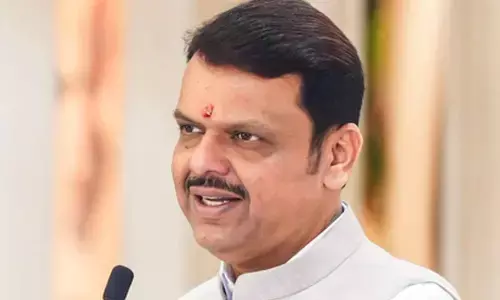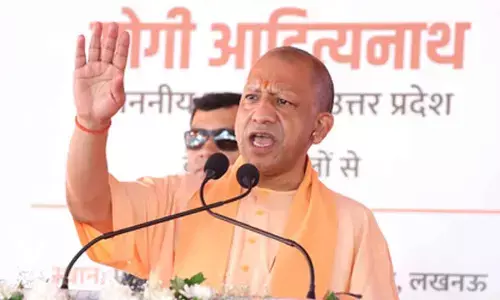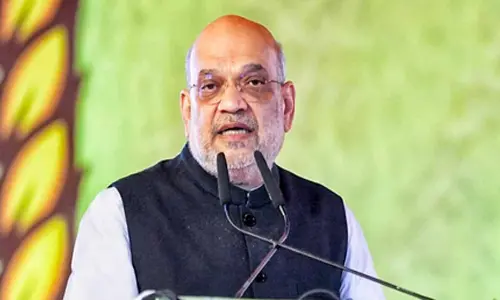Freedom to die

Freedom to die
There was an interesting question before Supreme Court, whether a person has a right to die
There was an interesting question before Supreme Court, whether a person has a right to die. That led to another question whether 'life' includes 'death'. What is life? The line between two dots of birth and death, which are not within the 'life'. Man has no control over birth or death. There is no right to take birth or to die. For those who are born, there is right to live, for sure. If you attempt to kill yourself, the state will prosecute you. Why? As per law, state has a duty to protect 'you' from 'you'.
Next question is are you free to smoke and slowly advance your death. To smoke is part of one's personal freedom. Cigarettes are essential. Non-smoking tobacco is a big killer than smoking tobacco, several millions die of both smoking and non-smoking tobacco.
If one goes out into roads during lockdown, police will protect you from you by beating you black and blue. They can even kill you so that you are prevented from killing you. They think, they have authority to kill you. the Government allows them to do so and gives immunity because he is seriously injuring people only protect them. We should understand!
Terror prevailed and fear is ruling. They fear and die. If not, you can go to hospital and there you can fear to die or see bills to die. We fear that covid19 pandemic is killing few thousands every day. Now we are very brave, we do not fear even though the pandemic- tobacco is killing around 40 lakh people every year in India alone, while corona killed 3.29 lakh only so far from first and second waves.
According to latest statistics, 35.4 lakh died so far (till today) with corona in the world, 5 lakh less than the corona deaths! We are brave. We do not fear. Imagine the combo pack of corona and tobacco, death gets only accelerated.
Every year in India
l 850 crore cigarettes sold.
l 26.7 crore smoke,
l 40 lakh people die.
It is said that India is third largest tobacco producer. Perhaps we should be proud of our progress, and India is contributing 42 per cent of deaths due to tobacco world over, reducing the burden of Mother Earth!
It is estimated that 3500 Indians die every day because of tobacco in India, equal to 25 Jet planes are crashing every day.
Some of the baffling facts about the consequences of tobacco use are:
1. 100 million people died from tobacco use in the 20th century. If current trends continue one billion people will die from tobacco use in the 21st century. (Eriksen M et al. The Tobacco Atlas. Fifth Ed. Atlanta, GA: American Cancer Society; 2015.)
2. Tobacco use kills up to half of all lifetime users. On average, smokers lose 15 years of life. (WHO Report on the Global Tobacco Epidemic, 2008: The MPOWER package. Geneva: World Health Organization; 2008.)
3. Tobacco kills more than 8 million people each year.1 Of these deaths, 1.2 million are caused by second-hand smoke exposure. (Tobacco Fact Sheet. World Health Organization; 26 July 2019. Available at: https://www.who.int/news -room/fact-sheets/detail/tobacco.)
4. Tobacco-related illnesses account for 1 in 10 adult deaths worldwide. By 2030, 80% of those deaths will be in low- and middle-income countries.
5. Smoking is estimated to cause about 1.4 trillion USD in economic damage each year. (U.S. NCI and WHO. The Economics of Tobacco and Tobacco Control. NCI Tobacco Control Monograph 21. NIH Publication No. 16-CA-8029A. Bethesda: U.S. DHSS, NIH, NCI, and Geneva: WHO; 2016.)
6. Bidi and cigarette smokers die 6 to 10 years earlier than their non-smoking counterparts.
26. 7 crore people consume tobacco in India, 42 per cent are men and 14.2 per cent are women. Every year ten lakh people die using tobacco, 9.26 lakh die with second-hand smoke, 20 lakh die by smokeless tobacco, which is 74 per cent of global deaths of smokeless tobacco. India is a big market for cigarettes, as in 2016 alone 85 billion cigarettes were sold. Tobacco is an enemy to medical profession and society, it is unrecognised pandemic, says Dr Subramanyeshwar Rao, senior oncology expert.
India became a Party to the WHO Framework Convention on Tobacco Control on February 27, 2005, later changed it to 31 May to spread awareness about dangers of tobacco. According to the World Health Organisation (WHO), "When the news came out that smokers were more likely to develop severe disease with COVID-19 compared to non-smokers, it triggered millions of smokers to want to quit tobacco." This year, the theme is 'Quit tobacco to be a winner'.
Tobacco control legislation
The Cigarettes and Other Tobacco Products (Prohibition of Advertisement and Regulation of Trade and Commerce, Production, Supply and Distribution) Act, 2003 (COTPA) is the principal comprehensive law governing tobacco control in India. In 2004, the Ministry of Health and Family Welfare exercised the powers granted to it in Section 31 of COTPA by promulgating a first set of rules, which, with respect to smoke free and tobacco advertising issues, have been stayed by court order or superseded. With respect to general enforcement of COTPA, G.S.R. 1866(E) lists certain officers who are authorized to carry out the entry, search, and seizure provisions of the Act. The Guidelines issued pursuant to Section 5B(2) of the Cinematograph Act of 1952, require the Central Board of Film Certification to ensure that certain types of smoking scenes do not appear in movies. Packaging and labelling provisions are included in several implementing rules under COTPA 2003.
'No Smoking' in public places
In India smoking is completely banned in many public places and workplaces such as healthcare, educational, and government facilities and on public transport. But the law permits the establishment of smoking areas or spaces in airports, hotels having 30 or more rooms, and restaurants having seating capacity for 30 or more. With respect to outdoor places, open auditoriums, stadiums, railway stations, bus stops/stands are smoke-free. States are free to use within their jurisdictions to enact smoke-free laws that are more stringent than the national law.
Advertising through most forms of mass media is prohibited. There are some restrictions on tobacco sponsorship and the publicity of such sponsorship.
Restrictions on media
It is regulated that the health warning labels are pictorial, and text should cover 85 per cent of the front and back panels of the tobacco product package parallel to the top edge; and are rotated every 12 months. Misleading packaging and labelling, including terms such as "light," and "low-tar" and other signs is prohibited.
Cigarette contents and disclosures
It is unfortunate that the law does not grant the authority to regulate the contents of cigarettes. There is a need for such public law to control the tobacco commerce in the interest of public health. At present the law does not require that manufacturers and importers disclose to government authorities information on the contents and emissions of their products. But it is basic requirement. When a cigarette maker wants a consumer to purchase his product, it is his duty to give complete information about contents, their proportion, the ill-effects of its use.
No sale within educational institutions
The law prohibits the sale of tobacco products via vending machines and within 100 yards of any educational institution. Educational institution is a public place, hence prohibition against use of tobacco products applies there. In addition, several states ban the sale of single cigarettes and gutka and other forms of smokeless tobacco. But there are no restrictions on internet sales or the sale of small packets of cigarettes or other tobacco products. The sale of tobacco products is prohibited to persons under the age of 18.
E-Cigarettes
The law prohibits the production, manufacture, import, export, transport, sale, distribution, and advertising of e-cigarettes. But it is a paradox that there are no restrictions on the use of e-cigarettes.
The Governments either at centre or states are interested in income from tobacco business, as vices are best sources of income for them. State facilitates tobacco business at the cost public welfare. You may not have place in crematorium, but you are free to die, smoking or Covid. First is choice and second is a chance.
(The writer is Professor of Law, Bennett University and former Central Information Commissioner)














